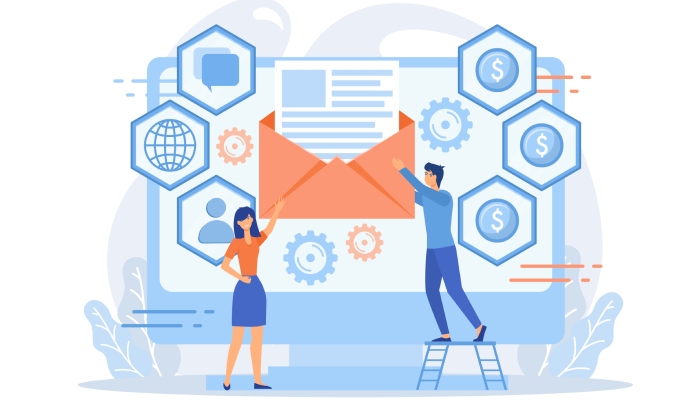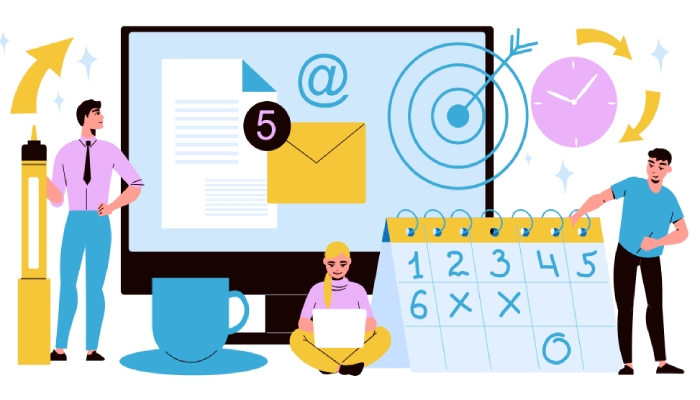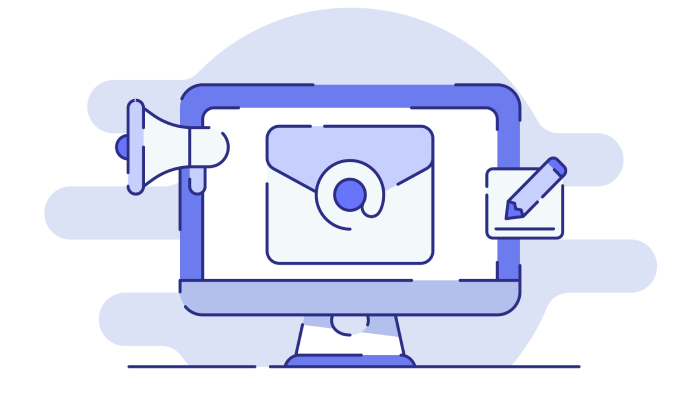Automate Follow Up Emails: A Comprehensive Guide to Successful Marketing
In a world where attention spans are shorter than ever, getting potential customers to engage with your emails can feel like a daunting task. You send out invites, offers, or updates hoping for responses and engagement, but often, they just get lost in crowded inboxes. This is where the magic of automating follow-up emails comes into play. By setting up automated sequences, you can ensure that your message isn’t just heard but resonates, nudges, and ultimately drives action from your audience.
Automation doesn’t replace personal touch; rather, it enhances it by ensuring meaningful communication happens consistently and efficiently. After diving into this guide, you’ll see how taking small steps in automation can lead to big wins for your marketing efforts.
To automate follow-up emails effectively, utilize a combination of CRM software and email marketing platforms, such as Mailshake or Zapier, that allow you to set up custom email sequences triggered by specific actions or timeframes. By creating personalized message templates and defining clear automation rules, you can maintain consistent communication with your prospects and significantly improve engagement rates.
Why Automate Follow-Up Emails?

Automating follow-up emails is a game-changer for businesses looking to enhance their marketing strategies. Imagine you send out a promotional email to hundreds of potential customers, but only a fraction responds. With automated follow-ups, those who didn’t engage initially can receive timely nudges to draw them back in.
In fact, studies show that automated follow-up emails can increase response rates by up to 50% compared to manual ones. The secret lies in the timing and consistency of communication that automation brings.
Think about this: Businesses employing automated email marketing typically enjoy average open rates around 50%, while those relying on traditional methods struggle with about 20%. This striking difference emphasizes the vital role of follow-up automation in engaging prospects who may need more time or reminders before they take action.
“Consistency in messaging is what sets apart successful campaigns from mediocre ones.”
Consider the perspective of an e-commerce store owner. When they send out customer purchase confirmations manually, it’s easy for human errors—like forgetting to send a thank-you note—to creep in. However, with automation software like Mailshake or Zapier, every customer receives an immediate acknowledgment of their purchase along with a discount code for future orders. Such gestures not only enhance customer experience but also cultivate loyalty, prompting repeat sales without increasing workload.
From personal experience as a marketer, integrating automation tools has revolutionized my approach to client communication. By eliminating the mundane task of sending routine messages, I’ve redirected my energy toward creating richer content and strategic campaigns that resonate with my audience. This shift not only energizes my work but also ensures that my clients feel valued at every touchpoint through personalized follow-ups.
Moreover, embracing automation can substantially save time—averaging about 6 hours per week—that would otherwise be wasted on manual email tasks. Imagine what you could do with all that extra time; perhaps focus on crafting tailored marketing strategies or even experimenting with new channels! Automation enables businesses to scale operations without sacrificing quality and personal touch.
With these insights into automating email processes, it’s time to examine specific solutions that streamline follow-up communications and fit seamlessly into your marketing ecosystem.
Tools to Automate Follow-Up Emails

As you venture into email automation, it’s imperative to understand that selecting the right tool is akin to finding the perfect partner for a dance—you want something that complements your style and objectives. Various platforms cater to distinct needs, making it essential to identify what features will best serve your business goals. The landscape of email automation is broad, and understanding the unique offerings can illuminate the path forward.
Popular Email Automation Tools
Among the most reliable options available today are:
- Mailshake: This platform stands out with its focus on sales and email outreach campaigns. It offers robust tracking features to monitor engagement and seamlessly integrates with various applications, allowing you to manage your efforts without jumping between disparate systems.
- GetResponse: A comprehensive marketing suite that bundles various tools, GetResponse includes an intuitive email automation feature that makes it easy for businesses of all sizes to implement effective communication strategies.
- FollowUp Boss: Perfect for real estate professionals, this tool integrates with CRM systems in a way that’s specifically geared toward managing client relationships quickly and effectively.
- Zapier: While not exclusively an email marketing tool, Zapier excels in connecting multiple applications to automate workflows. This means you can integrate different aspects of your business for a truly automated experience.
Each of these tools brings unique strengths to the table. For instance, Mailshake’s automated follow-up capability allows businesses to create customized email sequences—a feature that has proven particularly effective in increasing lead engagement. Imagine a sales team that tailored their sequences based on recipient behavior; they reported a remarkable 40% increase in email replies! With results like these, it’s clear why choosing the right tool is paramount.
However, before making a selection, it’s crucial to consider several key features that will determine the success of your automation efforts. Look for CRM integration—this ensures that your customer data flows smoothly between systems rather than requiring tedious manual updates. Usability is another critical factor; you want a platform that doesn’t necessitate an advanced degree to navigate.
Finally, investigate whether you can create custom sequences tailored to specific audience segments because personalization significantly boosts engagement rates.
As we explore how to effectively set up your automated communications, let’s transition into strategies focused on designing impactful email content that resonates with your audience.
Crafting Effective Email Templates

The backbone of successful marketing through follow-up emails lies in well-constructed templates. Think of your email template as a bridge connecting you and your audience. If that bridge is wobbly or uninviting, chances are they won’t cross over to engage with you. Therefore, focusing on creating engaging, inviting, and actionable templates is crucial for maintaining a solid relationship with your prospects.
Key Elements of a Strong Email Template
A vital component of any strong email template is the compelling subject line. This is your first opportunity to capture a recipient’s attention, so make it count. It should spark curiosity while remaining relevant. For instance, subject lines such as “You Won’t Believe What You Missed!” not only grab attention but also encourage the reader to click through.
In fact, research indicates that businesses leveraging engaging subject lines can experience open rates increase by up to 20%. Don’t underestimate this powerful feature in your toolkit.
Now consider the personalization aspect.
Personalization plays a significant role in transforming a generic email into one that feels tailor-made for the recipient. Utilizing data such as a potential client’s name, recent interactions, or specific interests can significantly improve engagement rates.
Studies show that personalized emails generate transaction rates six times higher than their non-personalized counterparts. However, tread carefully; overdoing personalization can come off as intrusive. Balance is key here: enough personal touch to resonate without overwhelming the recipient.
With engaging content and personalized touches established, let’s discuss how to steer readers toward action.
A clear call-to-action (CTA) is essential in guiding your recipients toward the desired outcome. It’s not just about having a CTA; it’s about making it prominent and compelling. Whether it’s downloading a white paper or scheduling a consultation, your CTA should stand out, catching their eye with an appealing design and concise wording.
In fact, emails with a single clear CTA can increase click-through rates by an astonishing 371%. Simple adjustments like bold text or contrasting colors can make all the difference in directing attention effectively.
Finally, let’s not forget about visual appeal.
The visual appeal of your email template reflects your brand’s identity and professionalism. An aesthetically pleasing layout can dramatically enhance user engagement. A/B testing different designs helps pinpoint what resonates best with your audience while ensuring adherence to best practices.
Furthermore, consideration must be given to mobile optimization since studies reveal that 46% of emails are opened on mobile devices. Failure to adapt could alienate half of your recipients!
Always remember: test and refine based on the responses you get because understanding what works will boost your follow-up campaign’s success over time.
By incorporating these elements into your email templates, you set the stage for seamless communication strategies that drive positive outcomes for your efforts.
Scheduling Your Follow-Up Emails

Proper scheduling can significantly enhance your email automation strategy, ensuring your messages hit inboxes at just the right moment. This is essential not just for maximizing open rates but also for improving engagement and fostering client relationships.
Consider this: sending an email when your audience is not likely to check their inboxes is like throwing a message in a bottle into the ocean. It might eventually wash up on shore, but it won’t yield the immediate impact you’re aiming for.
Know Your Audience
Understanding your audience is key to determining the optimal timing for your emails. For instance, if you’re targeting business professionals, weekday mornings can be prime time as they settle into their day—coffee in hand. In contrast, retail customers often engage more actively during evenings or weekends when they’re free from work obligations. Using tools such as surveys or analyzing past engagement data can provide valuable insights into your audience’s habits.
“Tailoring the timing of your emails can mean the difference between a read message and one that goes straight to the trash.”
Leverage Time Zones
In this global digital age, many recipients exist across varied time zones. Therefore, employing automation tools that adjust sending times based on these zones can greatly improve your results. Platforms like GetResponse include features that allow you to send emails according to the unique time settings of each recipient. This small adjustment can lead to a significant increase in open rates as more people receive emails when they are available to read them.
Interval Sequences
Establishing a steady rhythm for follow-up emails is crucial as well. It’s a balancing act; you want to keep communication open without overwhelming recipients. A common practice is to initiate contact with an email, follow up three days later, and then send a final reminder about a week after the initial outreach. This helps ensure that your emails are spaced out enough to avoid fatigue while maintaining consistent visibility in their inbox.
By understanding your audience, leveraging time zones, and establishing interval sequences for follow-ups, you’re paving the way toward effective communication strategies that will ultimately enhance engagement and conversions. Let’s move forward by exploring how you can optimize these processes even further.
Best Practices for Automation

To truly harness the power of automated follow-up emails, there are several best practices that can significantly enhance your email marketing efforts.
The first step is ensuring consent and compliance. Always make sure you have permission from recipients to send them automated emails. This is not just a courteous practice; it’s essential for adhering to regulations like GDPR, which protect consumer rights and privacy. Gaining explicit consent protects your brand from potential legal consequences in a world where data sensitivity is paramount.
Moving forward, an important aspect of successful automation lies in active monitoring. Track key performance metrics such as open rates, click-through rates, and conversion figures. These metrics provide invaluable insights into how your audience engages with your content. For example, if you notice a drop in open rates, this might signal issues with your subject lines or sending times.
It’s beneficial to conduct A/B testing—try out different headlines or even adjust the time when emails are sent—to see what resonates best with your readers.
Understanding these metrics helps refine your strategy for better results.
Continuous optimization is another critical practice that every marketer should embrace. Automation isn’t a one-and-done approach; it requires regular evaluation and updating of templates, as well as adjustments based on recent performances. Your email strategies should be flexible enough to adapt to new trends or shifts in audience behavior.
By reviewing performance data regularly, you can identify what’s working and what isn’t, allowing you to fine-tune your campaigns accordingly.
An effective method for this continuous improvement cycle is to gather feedback directly from recipients whenever possible. Creating short surveys can yield insightful responses that go beyond mere open and click rates. Would they prefer more personalized touches? Are there topics they’re eager to hear about? These questions guide you toward crafting more targeted follow-ups that resonate with specific segments of your audience.
Lastly, don’t hesitate to leverage technology for further efficiencies in automation. Various tools integrate seamlessly with your current CRM systems or email marketing platforms, simplifying data analysis and strategy implementations while saving you precious time. Platforms like Mailshake come highly recommended for their intuitive setup processes and robust tracking capabilities.
By implementing these best practices—ensuring compliance through consent, meticulously monitoring performance metrics, embracing continuous optimization, actively gathering feedback, and utilizing expert tools—you pave the way for improved engagement outcomes. This positions you perfectly to explore even more advanced strategies within the realm of email automation.
Additional Email Automation Tasks

Beyond follow-up emails, there are numerous other tasks that can greatly benefit from automation within your marketing strategy. One key area is automating your welcome emails when someone subscribes to your newsletter. This initial contact is vital; it’s your chance to impress and engage new recipients right off the bat.
Statistics reveal that welcome emails boast an average open rate of 82%, which underscores their potential for making a positive connection. Instead of crafting each one manually, why not set up an automated sequence that acknowledges the subscription, introduces your business, offers valuable resources, and sets expectations for future communications?
Another powerful tactic is implementing drip campaigns designed to nurture leads over time. This involves sending a series of targeted emails based on specific user behavior—such as signing up for a free trial or engaging with previous content—using tools like Nureply to automate and personalize each step of the sequence.
For instance, if someone shows interest in your software’s features, you could automate a series of informative emails guiding them towards a paid subscription. Over time, these nudges can create deeper connections and encourage conversion.
| Task | Automation Benefit |
| Welcome Emails | High open rates and early engagement |
| Birthday Emails | Personal touch leading to higher engagement |
| Cart Abandonment Emails | Recovery of potentially lost sales |
| Re-engagement Campaigns | Reviving interest from inactive subscribers |
Let’s explore these tasks individually. Sending automated birthday emails adds a personal touch that resonates with customers, making them feel valued on their special day. By offering a unique discount or a small gift, you’re not just thanking them for being part of your community but also encouraging repeat business.
Following this concept, cart abandonment emails serve as timely reminders that can recover potentially lost sales. Imagine a customer whose items linger in their online shopping cart; an automated email prompting them about their forgotten purchases can help them complete the transaction. Just like how one company utilized this method and successfully recovered 15% of otherwise lost sales.
Employing these automation strategies helps build strong connections with your audience while maximizing efficiency, leaving you more time to focus on expanding other crucial aspects of your marketing efforts.
Incorporating automation into your email marketing strategy not only streamlines the process but also enhances customer engagement significantly. It’s time to embrace these techniques to elevate your marketing game.



